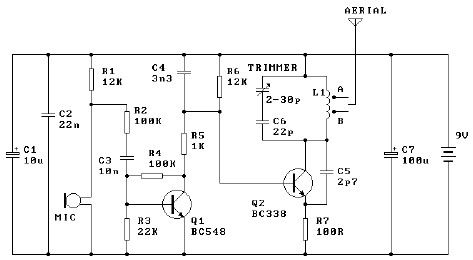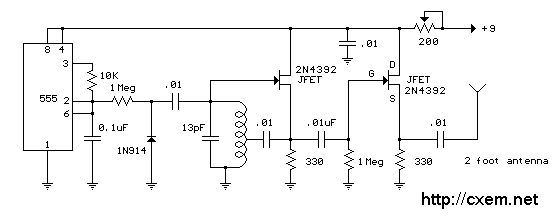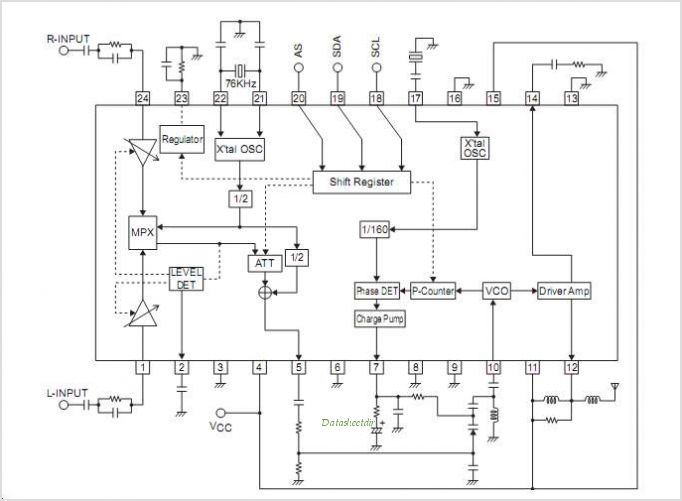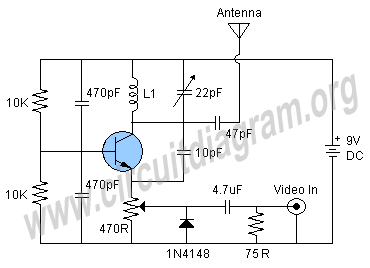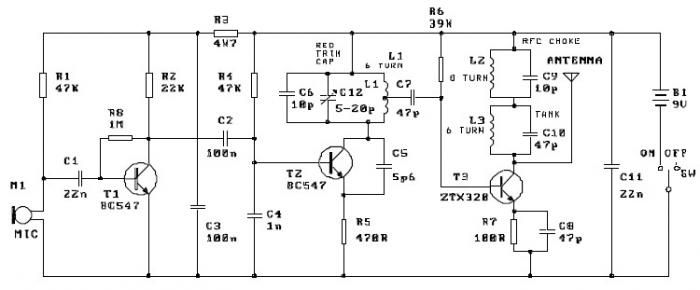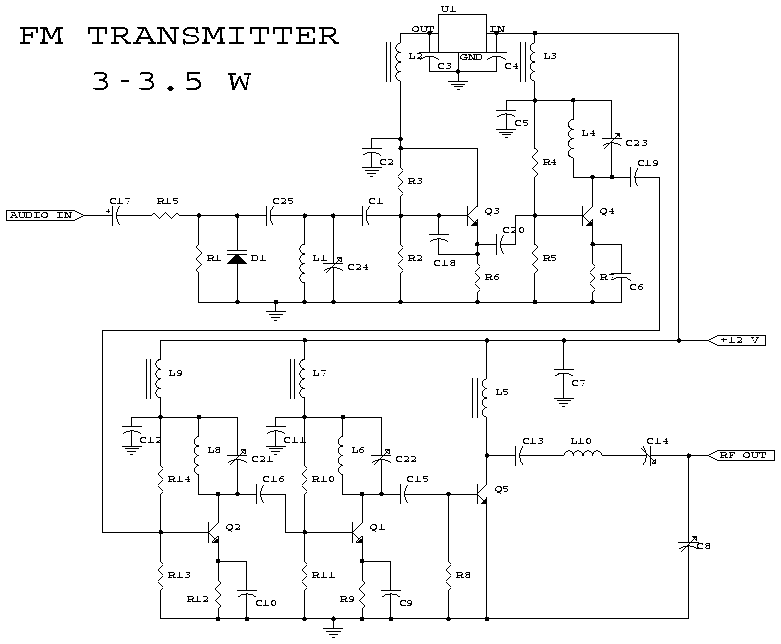
FM Transmitter 4Watt
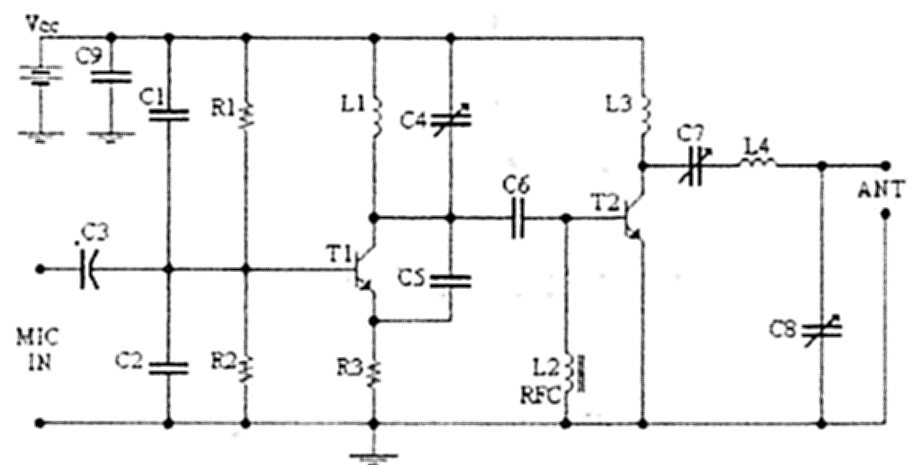
L2 RFC (resistance 1MOhm with an inductor wrapped around it made from fine isolated wire. Scratch the inductor and connect it to the resistance, creating a parallel L-R circuit.) With C7 and C8, we adjust the resistance of the aerial to ensure our voice is heard on the radio.
The described circuit involves an L-R (inductor-resistor) configuration where L2 serves as a Radio Frequency Choke (RFC). The RFC is characterized by a resistance of 1 MΩ, which is crucial for filtering out unwanted frequencies while allowing the desired signals to pass through. The inductor is constructed using fine isolated wire, which is coiled to enhance its inductive properties. This coiling increases the inductance, making the RFC effective in suppressing high-frequency noise.
The process of "scratching" the inductor likely refers to a method of creating a physical connection or modifying the inductor to optimize its performance in the circuit. By connecting this inductor in parallel with the resistor, a parallel L-R circuit is formed, which can provide specific impedance characteristics beneficial for radio frequency applications.
Capacitors C7 and C8 are integrated into the circuit to fine-tune the overall impedance, allowing for better adaptation to the aerial system. These capacitors play a vital role in tuning the circuit, ensuring that the resonance frequency aligns with the desired frequency of operation. This tuning is essential for effective signal transmission and reception, particularly when aiming to ensure clear voice communication over the radio.
The overall design emphasizes the importance of component selection and configuration in achieving optimal performance in radio frequency applications. Properly adjusting the values of the resistance and capacitance allows for enhanced audio clarity and reception quality, making the circuit suitable for practical use in radio systems.L2 RFC (resistance 1MOhm with wrapped around her inductor of enough coils from fine isolated wire. Scratch of utmost inductor and you stick in utmost the resistance making thus a parallel L-r circuit. ) With their C7, C8 we adapt the resistance of aerial (practically to them we regulate so that it is heard our voice in the radio as long as you beco
me cleaner). 🔗 External reference
The described circuit involves an L-R (inductor-resistor) configuration where L2 serves as a Radio Frequency Choke (RFC). The RFC is characterized by a resistance of 1 MΩ, which is crucial for filtering out unwanted frequencies while allowing the desired signals to pass through. The inductor is constructed using fine isolated wire, which is coiled to enhance its inductive properties. This coiling increases the inductance, making the RFC effective in suppressing high-frequency noise.
The process of "scratching" the inductor likely refers to a method of creating a physical connection or modifying the inductor to optimize its performance in the circuit. By connecting this inductor in parallel with the resistor, a parallel L-R circuit is formed, which can provide specific impedance characteristics beneficial for radio frequency applications.
Capacitors C7 and C8 are integrated into the circuit to fine-tune the overall impedance, allowing for better adaptation to the aerial system. These capacitors play a vital role in tuning the circuit, ensuring that the resonance frequency aligns with the desired frequency of operation. This tuning is essential for effective signal transmission and reception, particularly when aiming to ensure clear voice communication over the radio.
The overall design emphasizes the importance of component selection and configuration in achieving optimal performance in radio frequency applications. Properly adjusting the values of the resistance and capacitance allows for enhanced audio clarity and reception quality, making the circuit suitable for practical use in radio systems.L2 RFC (resistance 1MOhm with wrapped around her inductor of enough coils from fine isolated wire. Scratch of utmost inductor and you stick in utmost the resistance making thus a parallel L-r circuit. ) With their C7, C8 we adapt the resistance of aerial (practically to them we regulate so that it is heard our voice in the radio as long as you beco
me cleaner). 🔗 External reference
